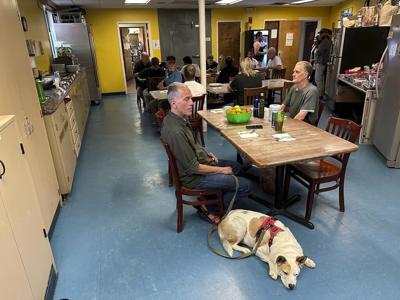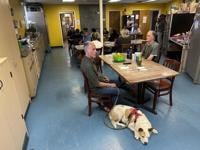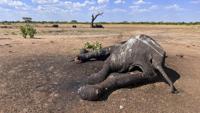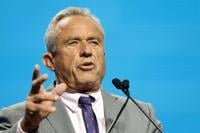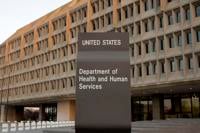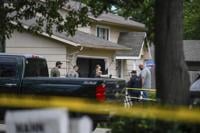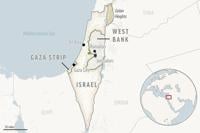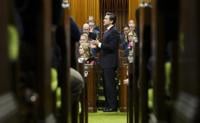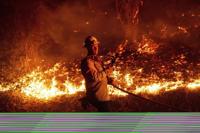SANTA FE, N.M. (AP) — A tally of the homeless population in New Mexico shows an abrupt jump in the number of people living without permanent housing or with no shelter at all, according to the legislative agency focused on budgeting and accountability.
A spot-count commissioned by the U.S. Department of Housing and Urban Development on a winter night in January identified about 3,850 homeless people, 48% more than a year earlier, a report released Tuesday found.
The count reflected many more unsheltered people — mostly in Albuquerque, where authorities are grappling with encampments on sidewalks and riverside parks.
The change interrupts a gradual, decade-long decline in homelessness in New Mexico, which has the highest poverty rate in the western U.S., according to the nonpartisan research agency.
“Poverty rates are high, labor participation is low. There is high substance abuse rates,” Kathleen Gygi, a program evaluator, told a legislative panel at the state Capitol. “These are all things that compound the problems.”
About half of available shelter beds were being used when surveyed, but some shelters were full and others were hard for people to reach.
The study highlighted a decline in affordable housing as rent increases vastly outpaced personal income growth. Average rents statewide have risen by about 70% since 2017, versus a 15% increase in incomes.
Legislators and Democratic Gov. Michelle Lujan Grisham are searching for the best ways to spend $84 million in new state funding to reduce homelessness and boost affordable housing. The governor commissioned an investment plan Tuesday that might help address housing shortages.
The Legislature's analysis of homelessness and housing found that people in New Mexico stay in shelters and transitional housing for relatively short periods, about half the national average.
But New Mexico's largest city, Albuquerque, faltered when it came to successfully transitioning people into permanent housing. About 20% of people in the city's shelters or temporary housing successfully make the leap into permanent housing each year, far below the national average and the 40% transition rate for Phoenix.
A dire struggle with homelessness amid soaring real estate prices was on prominent display Monday at an emergency shelter for men near downtown Santa Fe, just across the street from the city's thriving Railyard district of art galleries, restaurants, bars and a boutique movie theater.
Scott Snyder, a 67-year-old with limited use of his hands because of a childhood accident, moved into the facility run by St. Elizabeth Shelters in January after his truck broke down and he could no longer sleep in it. He said cheap rental apartments and spare rooms were plentiful when he moved to Santa Fe in the 1980s.
“The affordable rentals are almost nonexistent, they've all dried up,” Snyder said.
St. Elizabeth Executive Director Eduard Archuleta oversees two shelters in Santa Fe along with publicly subsidized apartment complexes that support chronically homeless people, disabled adults and low-income families with a variety of support services. The facilities are consistently filled to capacity, he said.
Archuleta says he has been astonished to see professionals with modest incomes but no place to call home turn up in droves to apply for space at the the organization's 120-unit affordable housing complex that opened in 2021.
“It was a deluge of people and most of them you never would have guessed that they were homeless,” he said.
At Tuesday's hearing, housing analysts warned that commitments to subsidized rent at hundreds of units may expire without intervention over the next decade. However, the state's financing authority for affordable housing does support a robust pipeline of multifamily units for low- and moderate-income families.
Isidoro Hernandez, CEO of the New Mexico Mortgage Finance Authority, said more than 50 multifamily projects with 4,300 units are under development or construction across the state.
Native Americans were overrepresented in New Mexico's homeless population — accounting for 17% of the homeless population and just 11% of the overall population, the study found. That often translates into overcrowded housing.
“We don't see the homeless because we don't allow people to be homeless. We will take them in,” said Democratic state Rep. Derrick Lente, a tribal member of Sandia Pueblo.

